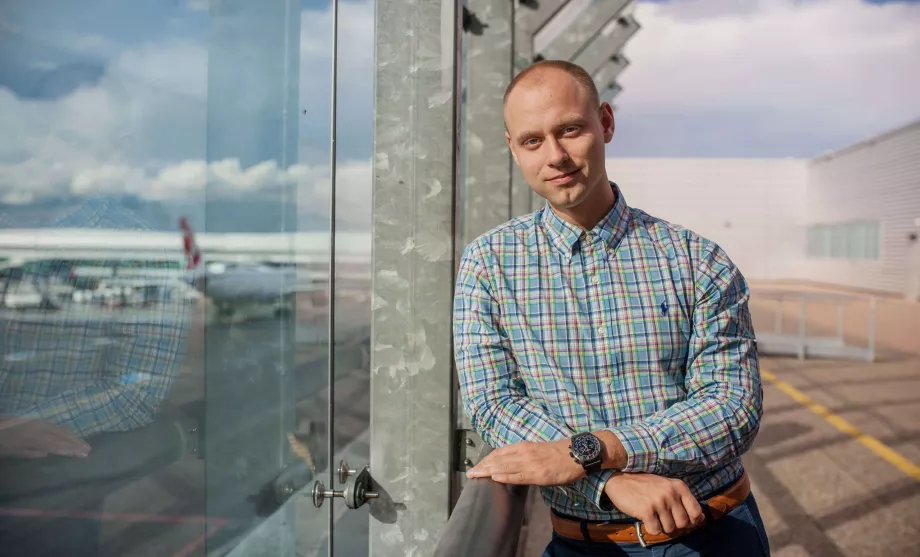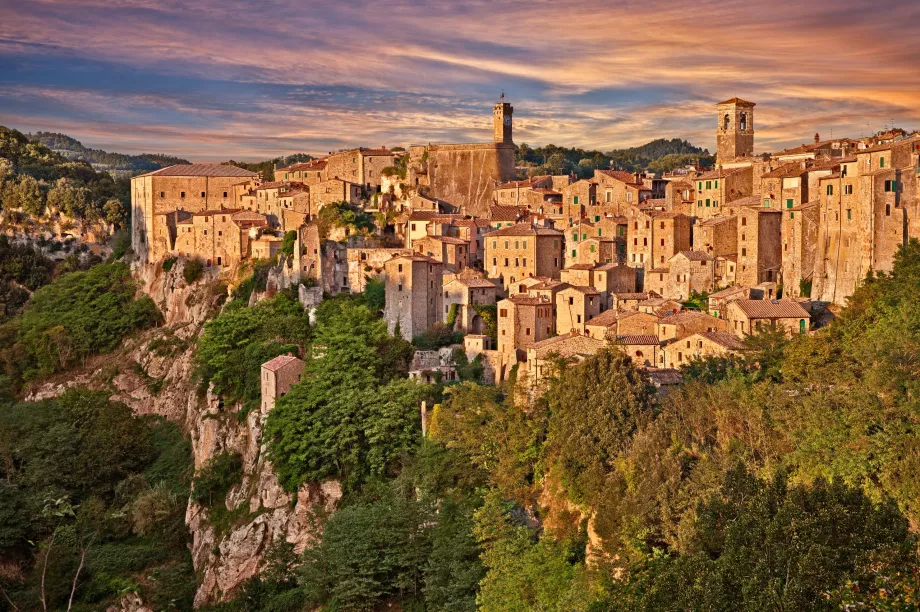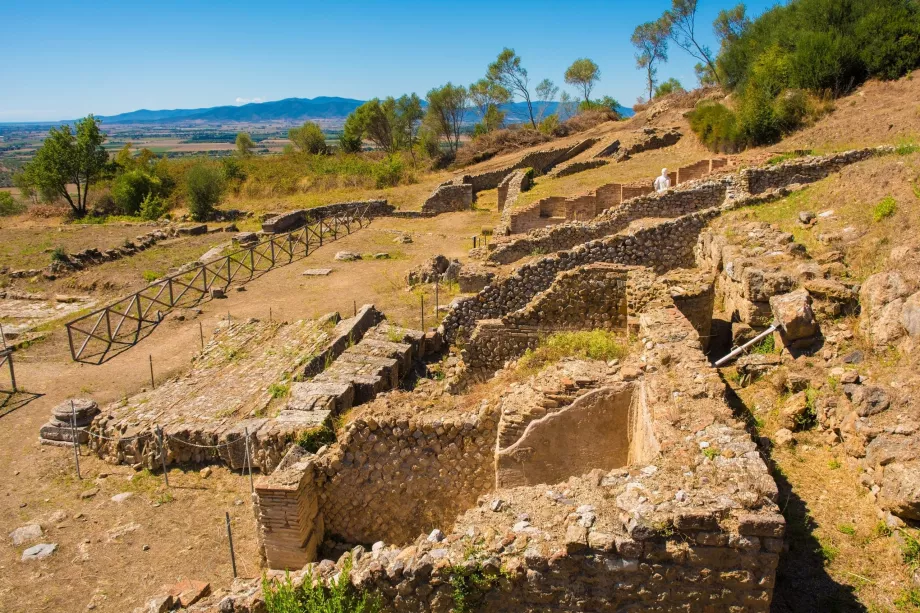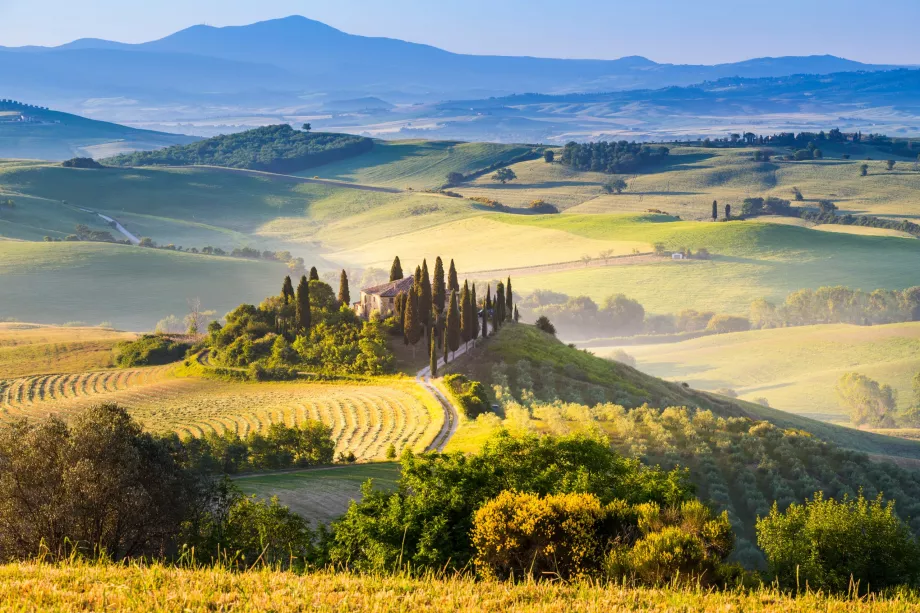Pitigliano

The romantic-looking village of Pitigliano is located in the very south of Tuscany, in a forgotten area where the crowds of tourists do not go and where the peace of the old days still reigns.
Pitigliano catches the eye at first glance with its impressive strategic location on a volcanic tuff, a small rocky peak that towers over the surrounding landscape.
This is also why the centre of Pitigliano is extremely rugged with many staircases and very steep winding streets. However, just arriving in Pitigliano is worth it.
As you drive through the idyllic rolling countryside full of vineyards, cypress and olive groves, you suddenly see a town where at first glance you can hardly tell where the cliffs end and the houses begin.
We recommend a visit to the town and the nearby village of Sorano.
Etruscan and Jewish history
The original form and location that make Pitigliano so attractive were given to the town by the Etruscans long before AD. However, there are very few remains of the Etruscans in Pitigliano, mainly in the form of worked rocks, but don't look for any major archaeological sites here.
The first written references to the town date back to the 11th century, but the most interesting part of Pitigliano's history did not begin until the end of the 15th century. At that time, the expulsion of Jews in Rome under papal laws was at its height, and Pitigliano, then part of the Orsini estate, was far removed from all the drama.
The Orsini had no prejudice against Jews and the local community flourished, moreover in symbiotic coexistence with the majority Christian community, which was very rare in Italy at that time. The Jewish community in Pitigliano experienced various vicissitudes over the centuries, but in the end always with a good ending, and so it was still at its height in the 19th century.
It is not surprising that Pitigliano is often nicknamed "Little Jerusalem".
Sights and attractions
The historic centre of Pitigliano consists of three parallel streets variously connected by some 60 small streets or spiral staircases. Just walking around the town is a very powerful experience.
The dominant feature of the town is the seemingly visible Cathedral of St. Peter and Paul from the early 16th century with a significant Baroque reconstruction during the 18th century.
The Palazzo Orsini and especially the 16th-century walls and fortifications of the town are a reminder of the Orsini estate.
One of the first official synagogues in Tuscany, built in 1598, is also a natural landmark.
Accommodation
If you want to slow down for at least a day during your travels in Italy and let the lazy atmosphere of a remote historic town carry you away, then definitely stay in Pitigliano for at least 1 night.
Pitigliano offers dozens of smaller guesthouses or apartments with prices starting at about 55 eur per night in a 2-bed room. You will look in vain for classic big hotels here, which only adds to the quiet atmosphere.
Among the apartments with the best value for money we would name Apartment Seminello or Da Titta with the best ratings in the whole city.
How to get there
Pitigliano is located on the SR-74 road connecting the coastal town of Albinia with Lago di Bolsena.
Public transport is only provided by bus routes, usually running 1-3 times a day, and detailed timetables can be found on the at-bus.it website. Look for these line numbers coming to Pitigliano:
- 11P, 41P - Albinia (change to trains), some lines need to change at Manciano
- 57P - Siena, sometimes you need to change at Aquapendente
In Albinia you change to regional trains going to Rome, Grosseto or Pisa.
What to see around
Discover all the places to see in Tuscany.
Any questions left?
If you have any questions or comments about the article...







